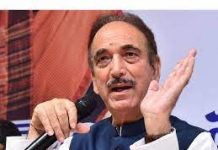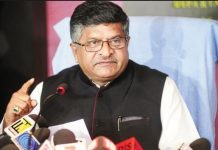
At the stroke of midnight on 15 August 1947, Jawaharlal Nehru gave his ‘Tryst with Destiny’ speech. His third line was: “A moment comes, which comes but rarely in history, when we step out from the old to the new, when an age ends, and when the soul of a nation, long suppressed, finds utterance.”
It is ironical and possibly, no coincidence. Since 2013, and specifically after he became the prime minister in May 2014, Narendra Modi has claimed that it was that same ‘moment’ for India today, when old politics has to give way to a new one, when the decades-old Nehru-Gandhi-Congress mindset will disappear, and when a new age of efficient and transparent governance will arrive.
One of Modi’s moves to achieve these objectives was the rechristening of the Planning Commission as NITI Aayog. The change in name, and the reorganisation, heralded the end of Nehruvian economics. On paper, it implied the triumph of politics over the planning process. Says Abheek Barua, a consultant at ICRIER, a think-tank: “It signifies the end of planning as we have known it for over six decades.”
It is true in theory. Over the past decade or so, the Planning Commission, under Montek Singh Ahluwalia, its former deputy chairman, had become almost dictatorial. It disbursed funds from the Central Plan pool to the states as per its whims and fancies. A policy planner, who attended several meetings between Ahluwalia and the states’ heads, explains: “In one of them, he shouted at a chief minister, who asked for more funds. He said, ‘You could not spend last year’s allocations. And you want more’?”
The commission’s A-team decided how much funds would go to which states and for which sectors. It determined which of the chief ministers’ pet projects got a lease of life. The chief ministers, and their finance ministers, were at the beck and call of officials in New Delhi’s Yojana Bhavan.
Obviously, the overall direction came from the then prime minister, Manmohan Singh, who was close to the deputy chairman, and his pro-reforms loyalists. But the details were decided by the commission. Claims an observer: “The process was centralised. The chief ministers had regular run-ins with Ahluwalia, most of which were in vain. Even Modi faced the music when he was Gujarat chief minister (see page 26).”
After Modi became the prime minister, it was clear that it would mean the end of the road for Ahluwalia and the commission. NITI Aayog was the former’s ‘inclusive’ answer to a power-shift from the institution to chief ministers. In its new avatar, the states’ rulers would put their heads together to decide how much money they can grab for their states, and the mega dream projects. The vice-chairman (earlier deputy chairman), Arvind Panagariya, will be a figurehead as far as distribution of funds is concerned.

In essence, experts dub it a political move, which has to be viewed through the lens of political economy. To aspiring chief ministers, especially from the BJP, it is a huge carrot. If they can guide the party to massive victories in the forthcoming Assembly elections in states such as Delhi, Bihar, West Bengal and Uttar Pradesh over the next three years, they are likely to be in NITI Aayog’s good books. Huge wins in these states is crucial for Modi, if he has to transform his dream into reality.
As we have witnessed over the past few months, NDA-2 was forced to take the ordinance route to push through several reforms like changes in the land acquisition Act, and privatisation of the coal and mining and deep-rooted changes in the insurance sectors. This was primarily because the BJP and its allies don’t have the required numbers in the Rajya Sabha. Only a continuation of the Modi momentum in the Assembly elections can help the party to elect more members to the Upper House and change its composition.
For the existing chief ministers, NITI Aayog may become the stick to beat them with if they misbehave. The same way it happened during the Planning Commission days. Although the states’ heads can now directly participate in the planning process, instead of previously being given doles, the show’s director is Modi. The reason: with the wings of the vice-chairman and other full-time members clipped, the chairman (i.e., the prime minister) will become the ringmaster of this planned money circus. All roads, for the state politicians, will lead to 7, Race Course Road.
It is an ironical twist to the tale. Over the next few years, the planning process may become more centralised and dictatorial than it was before. Modi’s projects — bullet trains, smart cities and PPPPs (Public-Private-People Partnerships) — may attract attention and investments.

initiatives proposed by the Manmohan
government, Photo: Tehelka Archives
Says Bartun Mitra, an economist: “The basic difference between NITI Aayog and the Planning Commission seems to be that the former is under the Prime Minister’s Office, with the pm as an active chairman setting the agenda. Earlier, the prime minister was ex-officio chairman, who did not directly set the agenda. It seems to be a reflection of the extreme centralisation that has been taking place under this government.”
In such a scenario, what will Panagariya, his core team and scores of officials in NITI Aayog do? According to Barua, Panagariya and the new full-time members — Bibek Debroy, an economist, and VK Saraswat, former DRDO chief — will become advisers to the government. One of NITI Aayog’s objectives will be to track the big economic and investment picture. It may sketch the country’s vision, or where India will want to be in 2024. (Modi has claimed that he would remain in power for a decade!)
Many experts feel that this should be its main task. Neither the Planning Commission nor NITI Aayog should have anything to do with the allocation of Central resources. First, as Debroy pointed out in the past, it was a non-constitutional body, which was set up through a government resolution in 1950. Thus, it was not accountable to either the Cabinet or Parliament. Second, in a federal structure, the states should have equal powers to demand funds, and spend it in the manner that they desired. Finally, Ahluwalia emerged as an extra-constitutional authority, who reported to the prime minister.
Others disagree. According to Mitra, the question to be asked is “whether NITI Aayog will be asked to generate ideas, or become a vehicle to drive the prime minister’s agenda? If it is the former, then the earlier National Development Council (NDC, which comprised all the chief ministers and heads of Union Territories) could have been a more appropriate forum. If it is the latter, NITI Aayog, Planning Commission or NDC wouldn’t be necessary. For instance, Indira Gandhi typically didn’t need such institutions”.
Panagariya can also become Modi’s ‘fall guy’ like Ahluwalia was for Manmohan. Each time, the former prime minister wanted to test new ideas, he would ask the Planning Commission to float a policy balloon. In a paper or a speech, the deputy chairman would put it in the public domain. If the balloon was pricked, or the idea criticised, Ahluwalia would take the flak. If it was accepted, the prime minister would claim the credit. This was especially true for controversial decisions such as the drafting of PPP agreements.
Each time the states, Central ministries and private parties had problems with the PPP contracts, they went after Ahluwalia, who would sometime defend the commission and sometimes admit that the clauses in the agreements needed to be revised. Similarly, the deputy chairman’s statements on the income levels of BPL (below the poverty line) families turned controversial. However, in both cases, neither experts nor the media attacked the upa-1 and 2 regimes.
Panagariya and his bureaucratic team can emerge as a new pillar to support nda-2’s reforms. With its focus on de-bureaucratisation, business-friendliness and effective governance, NITI Aayog may come up with innovative views on how to fast-track growth and development over the next 5-10 years. It can borrow from global best practices and policies, and finesse them to suit India’s requirements. It can provide a theoretical framework, which can then be implemented nationally or state-wise.
The flip side is that while the chief ministers jostle with each other, and plead with Modi for money, NITI Aayog can become redundant as a policy think-tank. Although Modi takes his own decisions and depends on his loyalists, he is known to seek advice from differing sources, and not be dependent on a single institution or individual. Therefore, NITI Aayog will have to compete with others like the National Institute for Public Finance and Policy in the ongoing battle for ideas. Within the organisation, there could be ego clashes between Panagariya and Debroy, both of whom are close to Modi.
There are other question marks on the future of NITI Aayog. The government press release said that the institution will have a chief executive officer, whose name hasn’t been finalised. What will this CEO do in an organisation that deals with policies? Is this a prelude to transform it into a management structure that global consultancy firms, say McKinsey & Company, have? McKinsey, which has experts from different domains, is headed by a global managing director. More importantly, what will be the relationship between the CEO and the vice-chairman? How will their responsibilities be divided without internal tensions?
If the planning process has to change, and run smoothly, other changes need to be put in place. For example, there are rules and formulae on how the Central resources pie can be divided among the states. One of them is that if a state is unable to spend its annual allocations in a specific year, the money given to it the next year can witness only an incremental hike. Will this change? If it doesn’t, the country will witness the same criticisms by the chief ministers, as was the case in the past.
In the near future, the Centre will allot more of its revenues to the states, which will be able to spend them directly without Central intervention or diktat. As recent experiences prove, the centralised Plan Fund is getting squeezed rapidly; in the past few years, it shrank by over 30 percent. In such a scenario, the medium-term relevance of either the Planning Commission or NITI Aayog is contentious. Seen from this perspective, is there a five-year planned strategy that Modi has in his mind?
To understand this, one has to explore the seeming contradictions in Modi’s style of governance, and refer to the four lectures on ‘Integral Humanism’ delivered by Deen Dayal Upadhyaya in 1965. Modi claims that the late Sangh Parivar ideologue is his mentor on governance-related issues. Thus, what Upadhyaya said on the centralisation of the planning process is important.
On the one hand, Modi loves to control decision-making. But, on the other hand, he wants to give an impression that his style is inclusive, and involves others. Between this private stance and public posture, NITI Aayog falls bang in the middle. In the short run, the organisation may be used as a tool to keep policy formulations within the PMO. But as this centralisation grows, he will make moves to possibly disband NITI Aayog, and convince people that his focus is decentralisation.
This is where Upadhyaya fits in. In one of his lectures, he observed: “Centralisation and monopolisation have been the order of the day for all these years, knowingly or unknowingly. The planners have become prisoners of a belief that only large-scale centralised industry is economic and hence without worrying about its ill-effects, or knowingly but helplessly, they have continued in that direction.” Instead, he argued in favour of de-centralisation, which he claimed was one of the two words — the other was Swadeshi — “which can briefly summarise the economic policy suitable for the present circumstances”. This is the line Modi will repeat when NITI Aayog no longer exists, may be by 2019.
letters@tehelka.com













